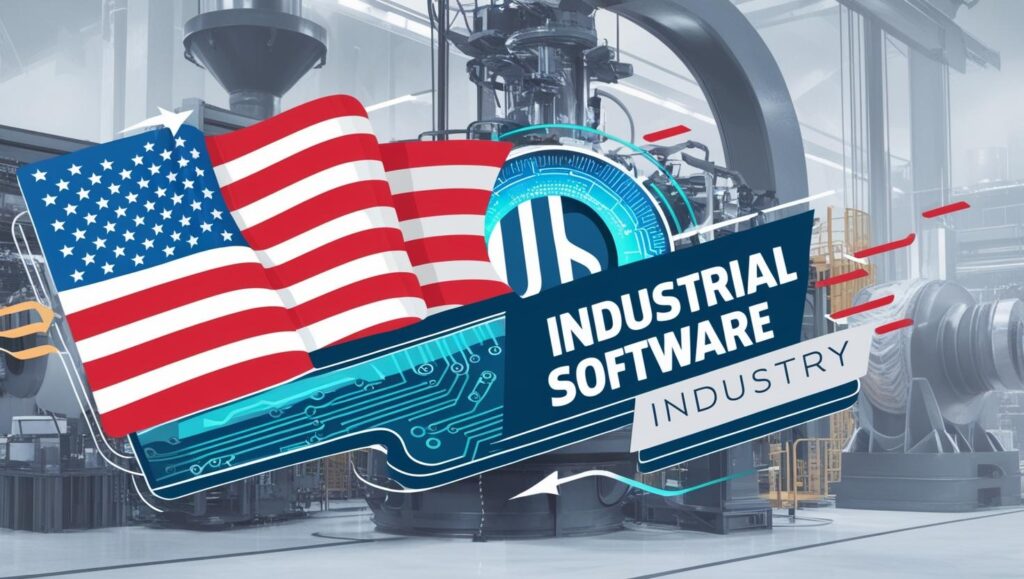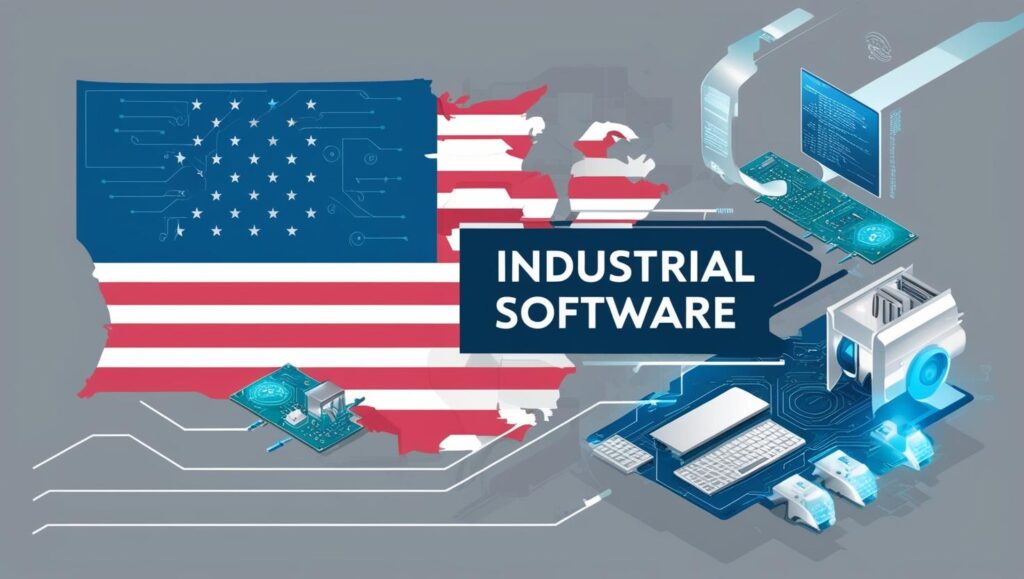The trade policies implemented under the Trump administration, particularly the tariffs on imports from China and other nations, have significantly disrupted global supply chains. While these tariffs are often associated with industries like manufacturing, agriculture, and technology hardware, their effects on the industrial software industry have been equally profound. As businesses face rising costs and shifting market dynamics, industrial software companies must adapt their strategies to remain competitive and profitable.

Explore how the Trump tariff policies have impacted the industrial software market and how companies are adjusting their approaches to thrive in this new economic landscape.
1. Tariffs on Hardware Impact Software Solutions
The industrial software market often operates in tandem with physical hardware components such as sensors, programmable logic controllers (PLCs), and industrial PCs—many of which are imported from countries like China and Mexico. The Trump administration’s tariffs on these goods have led to increased costs for manufacturers of industrial automation systems, which, in turn, affect software providers who rely on these systems.
How it’s affecting the industry:
Increased Costs: Software vendors often sell bundled solutions that combine both software and hardware. As hardware prices rise due to tariffs, the overall cost of these integrated solutions becomes less competitive.
Reduced Demand: Higher capital expenditures for hardware reduce clients’ budgets for software, leading to slower adoption of industrial automation solutions.
Response: Many software providers are exploring ways to reduce their dependency on tariff-impacted hardware, focusing on software innovations that can work with a wider range of systems, regardless of origin. Additionally, some companies are exploring alternative suppliers or adjusting their pricing strategies to offset increased costs.
2. Supply Chain Disruptions and Delivery Delays
Tariffs and trade restrictions have caused significant disruptions in global supply chains, leading to delays in the delivery of critical hardware components. Industrial software providers, who often rely on international suppliers for both hardware and services, are experiencing longer lead times for their product deliveries. This has led to delays in the deployment of software solutions and has impacted customer satisfaction.
How it’s affecting the industry:
Longer Lead Times: Software vendors face delays in the delivery of physical components required for their solutions, affecting implementation schedules.
Unpredictable Costs: With fluctuating tariff rates, cost forecasting has become more difficult for industrial software companies, impacting their ability to offer fixed pricing.
Response: To mitigate these issues, companies are increasingly moving toward localizing their supply chains or working with multiple suppliers in different regions to reduce the impact of potential trade disruptions. Software providers are also offering more flexible deployment timelines and adapting their products to work with locally sourced components.
Request Trump Tariff Threat Assessment Analysis Now: https://www.marketsandmarkets.com/pdfdownloadNew.asp?id=27555137

3. A Shift Toward Cloud-Based and SaaS Solutions
One of the most significant changes in the industrial software market in recent years has been the shift toward cloud-based solutions and Software-as-a-Service (SaaS) models. These models allow companies to reduce their reliance on hardware and minimize the tariff-related cost increases associated with physical goods.
How it’s affecting the industry:
Decoupling from Hardware: Cloud-based industrial software solutions do not require the same physical hardware components, making them less vulnerable to tariff fluctuations.
Reduced Infrastructure Costs: With SaaS and cloud solutions, customers do not have to purchase costly hardware upfront. Instead, they pay for software services on a subscription basis, which is easier to manage and more flexible.
Response: Many industrial software companies are accelerating their transition to cloud-based platforms and SaaS models. These solutions allow businesses to deploy software quickly and efficiently, without the logistical and tariff-related hurdles associated with hardware. This model also provides recurring revenue streams, which are attractive to investors.
4. Increased Focus on Domestic Manufacturing and Reshoring
In response to tariff pressures, some industrial software companies are beginning to rethink their global supply chains. The Trump administration’s trade policies have prompted many manufacturers to explore reshoring or nearshoring options to reduce the risks and costs associated with overseas production. This shift toward domestic manufacturing is impacting the entire industrial ecosystem, including the software market.
How it’s affecting the industry:
Increased Demand for U.S.-Made Solutions: As manufacturers bring production back to the U.S., they are increasingly seeking domestic software solutions that align with local production capabilities.
New Market Opportunities: Software providers that cater specifically to the needs of U.S.-based manufacturers are finding new opportunities to expand their market share.
Response: Industrial software vendors are forming partnerships with U.S.-based manufacturers and focusing on developing solutions that support reshored or nearshored operations. By aligning their offerings with the needs of domestic production, software providers can tap into new market segments that were previously less accessible.
5. Strategic Adjustments in Pricing and Business Models
The uncertainty caused by tariffs has led to significant pricing volatility in many industries, including industrial software. Companies must adapt their pricing models to account for fluctuating costs and remain competitive in a shifting market.
How it’s affecting the industry:
Price Sensitivity: Customers are increasingly price-sensitive as hardware and raw material costs rise, and many software providers must reassess their pricing strategies to stay competitive.
Increased Focus on Flexibility: Businesses are seeking more flexible, cost-effective software solutions to mitigate the effects of rising operational costs.
Response: Software companies are adopting more agile pricing strategies, such as tiered pricing, pay-per-use models, and subscription-based services, to accommodate customers facing higher costs. Additionally, companies are reevaluating licensing models to better align with the evolving needs of the market.
6. Long-Term Strategic Adaptations and Innovation
Despite the challenges posed by the Trump tariffs, the industrial software industry has an opportunity to innovate and evolve. Companies that embrace technological advancements and new business models will be better positioned to succeed in the post-tariff landscape.
How it’s affecting the industry:
Innovation Opportunities: The need for more flexible and adaptable solutions presents an opportunity for software vendors to innovate and develop new offerings.
Emphasis on Automation: As businesses look to cut costs and improve efficiency, there is growing demand for automation solutions. Industrial software providers can capitalize on this by enhancing their automation capabilities and offering more integrated solutions.
Response: Companies are investing more in Research and Development (R&D) to create cutting-edge solutions that help customers navigate the changing economic landscape. Additionally, Industry 4.0 technologies like IoT, AI, and machine learning are being integrated into software solutions to offer greater value.
The Trump tariff policies have undeniably impacted the industrial software market, driving up costs, causing supply chain disruptions, and creating uncertainty for both software vendors and customers. However, these challenges also present opportunities for companies to innovate, adapt their business models, and capture new market segments.
By focusing on cloud-based solutions, domestic manufacturing, agile pricing strategies, and strategic partnerships, industrial software companies can successfully navigate the shifting landscape and position themselves for long-term success.
About MarketsandMarkets
MarketsandMarkets™ has been recognized as one of America’s Best Management Consulting Firms by Forbes, as per their recent report.
MarketsandMarkets™ is a blue ocean alternative in growth consulting and program management, leveraging a man-machine offering to drive supernormal growth for progressive organizations in the B2B space. With the widest lens on emerging technologies, we are proficient in co-creating supernormal growth for clients across the globe.
Today, 80% of Fortune 2000 companies rely on MarketsandMarkets, and 90 of the top 100 companies in each sector trust us to accelerate their revenue growth. With a global clientele of over 13,000 organizations, we help businesses thrive in a disruptive ecosystem.
The B2B economy is witnessing the emergence of $25 trillion in new revenue streams that are replacing existing ones within this decade. We work with clients on growth programs, helping them monetize this $25 trillion opportunity through our service lines – TAM Expansion, Go-to-Market (GTM) Strategy to Execution, Market Share Gain, Account Enablement, and Thought Leadership Marketing.
Built on the ‘GIVE Growth’ principle, we collaborate with several Forbes Global 2000 B2B companies to keep them future-ready. Our insights and strategies are powered by industry experts, cutting-edge AI, and our Market Intelligence Cloud, KnowledgeStore™, which integrates research and provides ecosystem-wide visibility into revenue shifts.
In addition, MarketsandMarkets SalesIQ enables sales teams to identify high-priority accounts and uncover hidden opportunities, helping them build more pipeline and win more deals with precision.
To find out more, visit www.MarketsandMarkets™.com or follow us on Twitter , LinkedIn and Facebook .
Contact:
Mr. Rohan Salgarkar
MarketsandMarkets™ INC.
1615 South Congress Ave.
Suite 103, Delray Beach, FL 33445
USA: +1-888-600-6441
Visit Our Website: https://www.marketsandmarkets.com/